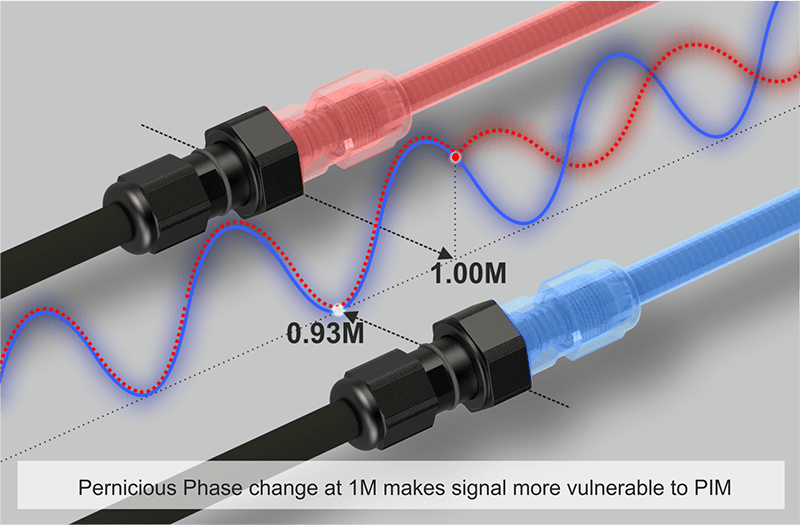Length is important (when it comes to cables)
Cable lengths in mobile base station structures are much more important than previously thought according to a new study, which has discovered that adjusting a jumper cable length by as little as 1cm can significantly influence PIM.
Research undertaken during the investigations into PIM that resulted in the influential white paper Connector Related PIM by Hughes Electronics and the Biomedical and Communications (BiMEC) research group at London South Bank University - suggests that standard metre denominated lengths of cables are rarely phase congruent with commonly used (cellular telecom) frequencies and cause higher levels of PIM than are necessary.
A simple PIM solution for Infrastructural Data Connections
PIM is a series of resulting signal harmonics and distortions that emerge between two or more interacting signals when transmitted through passive components such as cables and connectors, causing unwanted interference and degradation of wireless communications. 4G, 5G and Future Generation Networks require stricter Signal to Noise Ratios (SNRs) and the issue of PIM must be addressed if cellular capacity is to be maintained.
Greg Rymar, head of research and product development at Hughes Electronics explained; ‘During our prior research into connector related PIM we discovered that small adjustments to cable length made a significant difference to PIM results, in particular we found that industry standard Jumper and feeder cables denominated in multiples of 0.5 or 1 metre lengths, did not produce the most desirable results when it came to PIM. Our investigations showed the reason for the phenomenon was that these standard cable lengths are not in harmony with frequency wavelengths i.e. the cable length does not match the compound length of the carrier frequency Sine Wave causing ‘phase offsets’ and triggering phase angle reflections which can be seen as PIM.
In addition each reflection causes a loss of amplitude (VSWR) to the received signal and Inter-Modulation (IM) becomes more acute as a result of the difference in power between transmitted and receive signals. The more impoverished received signal strength is, the more vulnerable it is to PIM distortion levels.’

Conclusion
Calculating overall phase displacement and adjusting cable length to harmonise phase in the operating frequency range is a must for improving PIM performance. In light of this, Hughes Electronics have now added a length calculation service to their Network Approved rapid reaction non-standard jumper cable manufacturing service. The addition of the new service provides clients with the performance advantage of frequency and phase matched cables.
Hughes frequency matched jumper cables are factory prepared in Hughes’ central London workshop using state of the art high temperature inductive soldering and incorporate an IP68 gas tight moulded finish.
For further information on frequency optimised jumper cables or the ground breaking White Paper Connector Related PIM please contact:
Chantha Ung, Hughes Electronics This email address is being protected from spambots. You need JavaScript enabled to view it. tel: 020 7378 1400



